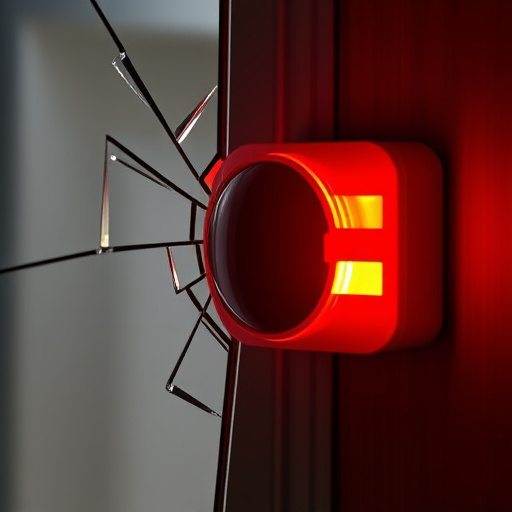Glass break alarm sensors, using advanced technology, instantly detect and respond to broken glass sounds, ensuring immediate intrusion notifications. Optimal placement near large windows or doors, considering line-of-sight visibility and environmental conditions, enhances their effectiveness. Installation involves identifying suitable locations, preparing sensors, mounting them securely, testing individual sensors, and setting adjustments for optimal sensitivity. Regular testing, maintenance (including battery checks, lens cleaning, and connection inspection), and understanding the control panel ensure a reliable system providing 24/7 protection.
“Uncover the power of protection with glass break alarm system installation. This comprehensive guide delves into the intricacies of these advanced sensors, exploring their functionality and vital components. Learn how to strategically select the perfect installation locations for maximum impact. Our step-by-step process ensures a seamless setup, while testing and maintenance tips promise optimal performance. Discover why investing in a glass break alarm system is a game-changer for enhancing home or business security, leveraging technology to deter potential threats.”
Understanding Glass Break Alarm Sensors: How They Work and Their Components
Glass break alarm sensors are an essential component of any home or business security system. These devices are designed to detect and respond to the unique sound waves produced when glass is broken, providing a rapid alert to potential intruders. Understanding how they work and their key components is crucial for effective installation and maximising their protection capabilities.
The primary function of these sensors is to convert the high-frequency sound waves generated by breaking glass into an electrical signal that triggers an alarm. They consist of several vital parts: a microphone or sensor, an amplifier, and a processor. When glass breaks near the sensor, it captures the resulting acoustic signals, which are then amplified and processed to determine if they match the signature of a broken glass sound. This rapid analysis allows for a nearly instant response, ensuring quick notification of any unauthorized entry attempts through glass windows or doors.
Choosing the Right Location for Sensor Installation: Factors to Consider
When installing a glass break alarm system, selecting the optimal location for sensors is paramount. Key factors to consider include access and line-of-sight visibility. Each room’s unique architecture dictates where sensors can be strategically placed for maximum effectiveness. For instance, in areas with large windows or glass doors, sensors should be positioned to capture any potential shattering noise. This often means mounting them on walls or ceilings at a distance from the glass but within earshot of the alarm control panel.
Additionally, factors like environmental conditions and obstructions must be accounted for. Sensors should avoid direct exposure to harsh weather or objects that could obstruct their view, as these elements might impact sensitivity and false triggers. Balancing these considerations ensures an effective glass break alarm system tailored to specific locations, enhancing security without unnecessary alarms.
Step-by-Step Guide to Installing a Glass Break Alarm System
Installing a glass break alarm system is a straightforward process that can significantly enhance home or business security. Here’s a step-by-step guide to help you get started. First, identify the locations where you want to install the sensors—typically on windows or glass doors. Ensure these areas are easily accessible for sensor placement and have clear lines of sight without obstructions.
Next, prepare the sensors by removing them from their packaging and inspecting each component. Each glass break alarm sensor should include a transmitter and receiver unit, along with mounting hardware. Attach the sensors firmly to the chosen surfaces using the provided adhesives or brackets. Ensure proper alignment between the transmitter and receiver for optimal sensitivity. Once installed, test each sensor individually to verify its functionality. Adjust settings as needed, ensuring sensitivity levels are suitable for your environment.
Testing and Maintaining Your Glass Break Alarm System: Ensuring Optimal Performance
Regular testing and maintenance are essential for ensuring your glass break alarm system operates at peak performance. Start by familiarizing yourself with the system’s control panel, which is often the central hub for monitoring and controlling alarms. Most systems come equipped with test buttons or modes that allow you to simulate a break event without triggering an actual alert, enabling you to verify sensor functionality. This step is crucial as it helps identify any faults early on, such as unresponsive sensors or faulty wiring.
In addition to periodic testing, regular maintenance includes checking battery levels in the sensors and control panel, cleaning the lenses of the optical sensors (if applicable), and inspecting the system for loose connections. Many glass break alarm systems offer remote monitoring capabilities, allowing you to keep an eye on things even when you’re away. Remember, a well-maintained system will provide more reliable protection, ensuring peace of mind around the clock.
